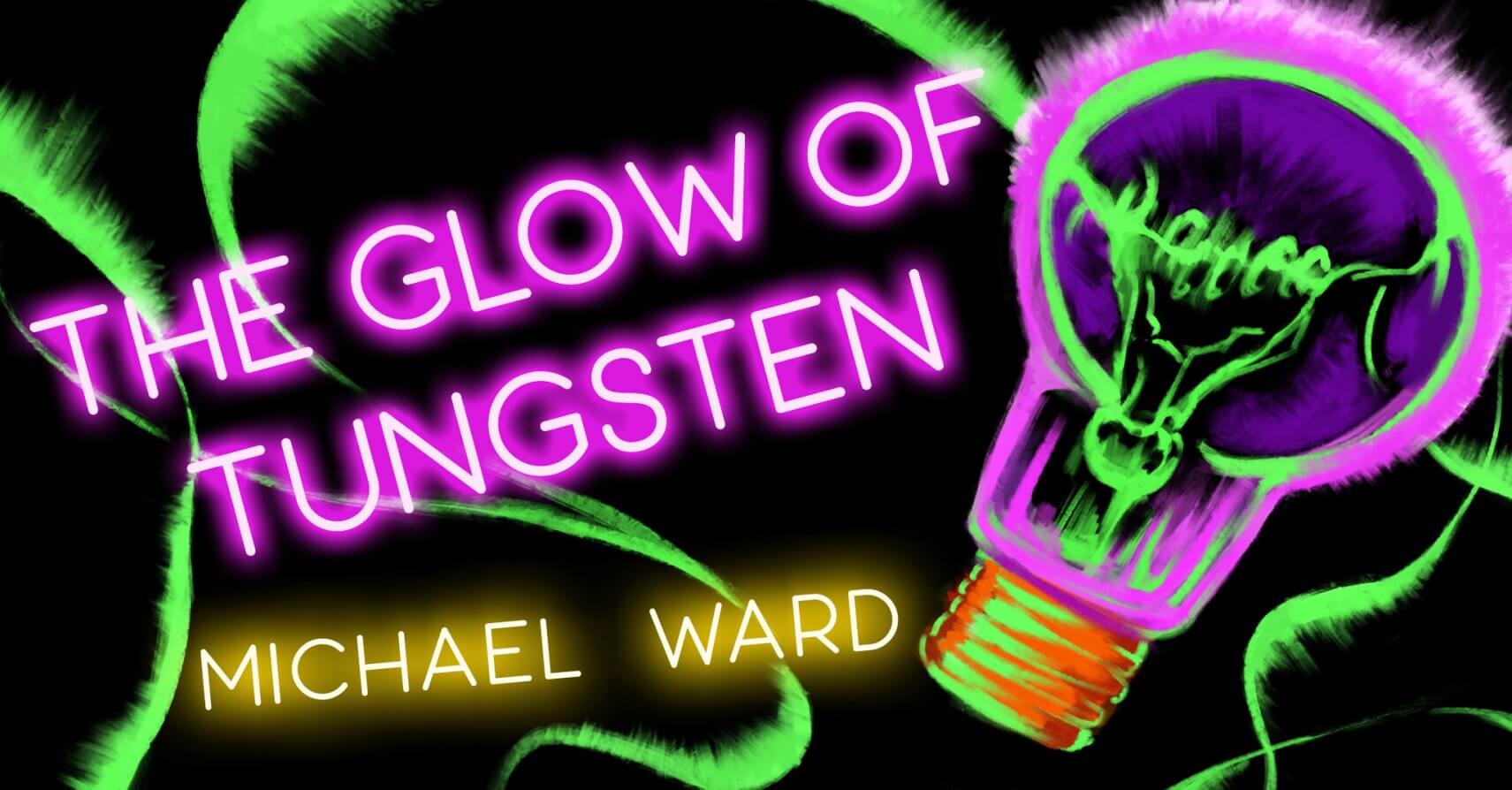Tungsten, the strongest element on earth, is forged in supernovas, when a star’s matter heats to a billion degrees, explodes, and the resulting light is so bright it can be seen in the sky during the day. The metal is also used to make the tiny filament that glows in a lightbulb. I recently discovered in my parents’ attic ten such lightbulbs, yet no light.
As I peered through the darkness with a flashlight, one bulb appeared, then another, and so on. They were either scattered over the gray insulation that lay as plump as down or rested on the drywall between ceiling joists. Lightbulbs that didn’t work. Lightbulbs that, for some reason, hadn’t been brought down and disposed of. Lightbulbs that as of August 2023, in an effort to help curb climate change, were no longer available for purchase in stores across America.
It’s hard to overstate how the incandescent lightbulb changed lives. There was a time—in the scheme of humanity, an infinitesimally short time ago—when one could not simply flip a switch and watch a room come alive with color. Then you could. Electrons were ordered, at once, to vibrate across filaments and create glowing orbs of starlight that enlivened homes, schools, hospitals, and businesses around the world. There is beauty in their intricate simplicity. And for the first hundred years of their existence, they didn’t change much at all.
I was up in that dark attic that day because my parents had asked me to bring down a toy for my newborn daughter, a disused Fisher-Price Family Farm without a single plastic chicken or cow inside. I played with this forty years ago, yet I have no memory of it. My parents, however, remember. They can flip a switch and cast a fragile light on such a memory or an experience as unknown to their children as it is about their children. They remember me playing with the now-missing chickens and cows, perhaps a little tractor. And they remember how it all fitted neatly behind the barn’s door with the off-white latch.
This is the great, unspoken generational divide, an asymmetry that now, as I hold my daughter, I have begun to experience for myself. There are things—many things—I will conjure forth, decades from now, about her childhood that she will not know, or to be quite frank, maybe even care about. If Cassandra was doomed to know the future and never be believed, a parent is cursed to remember the unshareable past. Those memories will dim as I age until one day they will disappear.
It is not Edison who introduced tungsten filaments. That innovation ultimately came from a forty-year-old scientist working in New York. In the early 1900s, William D. Coolidge and a small team at General Electric saw the opportunity to work the metal in a unique way and thereby give the lightbulb a new glow. It was the young scientist’s first patent in what would be a string of two dozen in his career. Tungsten bulbs quickly grew in popularity just as the Third Circuit Court of Appeals clawed back his patent in 1928. “What he produced by his process,” wrote the Court, “was natural tungsten in substantially pure form. What he discovered were natural qualities of pure tungsten. Manifestly he did not create pure tungsten, nor did he create its characteristics. These were created by nature….”
The stars created tungsten, by dying.
As a new parent, creation and destruction have been on my mind: the memories we have created and will create as a family, and those remnants of the past that leach into history only occasionally to be dug up by an excursion into an attic. For twenty years, my parents occasionally climbed a ladder, flipped on a light in the attic, and recalled a small snippet of our lives via relics like the barn.
The lifespan of a tungsten filament is a thousand hours. With so little attic use, those ten bulbs lying around the attic could’ve provided light for 200 years. But an attic in Texas boils in the summer. Every day for months. There is pain in heat. There is suffering in heat. Even tungsten, born in the most extreme environment in the universe, can’t keep up with that kind of pressure. Who can?
For all its great attributes, glowing tungsten recklessly soaked up energy. A changing climate and advances in technology have made the tungsten filament the modern equivalent of leaded gasoline. Light-emitting diodes (LEDs), for example, use a fraction of the energy of tungsten and last many times longer. They also produce little excess heat. They are, no doubt, what Coolidge himself would have spent years perfecting instead of tungsten filaments if the technology had been available. Instead, he created the next best thing, and that lasted a hundred years. Ironically, electroluminescence, the phenomenon that led to LEDs decades later, was discovered around the same time Coolidge was working with tungsten.
Just as there will be a day when I pick up my daughter for the last time, there was an evening when a lamplighter lit his last lamp. Things do change. Thankfully, I have more time. Last weekend, I grabbed my daughter and held her during an annular eclipse, when the moon obscures most but not all of the sun. It is the equivalent of blotting out our nearest star with one’s thumb, but no less spectacular to see. All that energy, all that heat for a few brief moments was blocked by the moon. She’s too young, of course, to recognize this as anything more than her father holding her on a sunny day. There will be another eclipse next year far more spectacular than this one. For several minutes, our afternoon will turn into dusk. She won’t remember that either. I will, though, for both of us.

